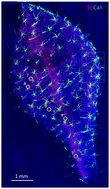Identification and physiological comparison of plant species that show positive or negative co-occurrence with selenium hyperaccumulators
Abstract
In these studies we identified and compared the properties of plant species that showed positive or negative co-occurrence with selenium (Se) hyperaccumulators in their natural habitat. The main questions addressed were: which species are most abundant directly adjacent to hyperaccumulators, and which are absent? How do Se accumulation and tolerance compare in species found to positively or negatively co-occur with hyperaccumulators? Approaches included field surveys, X-ray microprobe analysis of field samples, and a lab Se tolerance and accumulation study. When 54 hyperaccumulators across two naturally seleniferous sites were surveyed for their five nearest neighboring species, and the relative abundance of these species around hyperaccumulators compared to that in the overall vegetation, some species were identified to positively or negatively co-occur with hyperaccumulators. Several positively co-occurring species showed high Se accumulation capability (up to 900 mg Se per kg dry weight), which may reflect Se tolerance. Leaf X-ray microprobe analysis found relatively more organic forms of Se in two positively co-occurring species than in a negatively co-occurring one. There were elevated soil Se levels around Se hyperaccumulators, and neighbors of Se hyperaccumulators had a higher tissue Se concentration as compared to when the same species grew elsewhere in the area. The elevated soil Se levels around Se hyperaccumulators – likely resulting from litter deposition- may significantly affect the local plant community, facilitating Se-tolerant plant community members but lowering the fitness of Se-sensitive members.

- This article is part of the themed collection: Phytometallomics


 Please wait while we load your content...
Please wait while we load your content...
